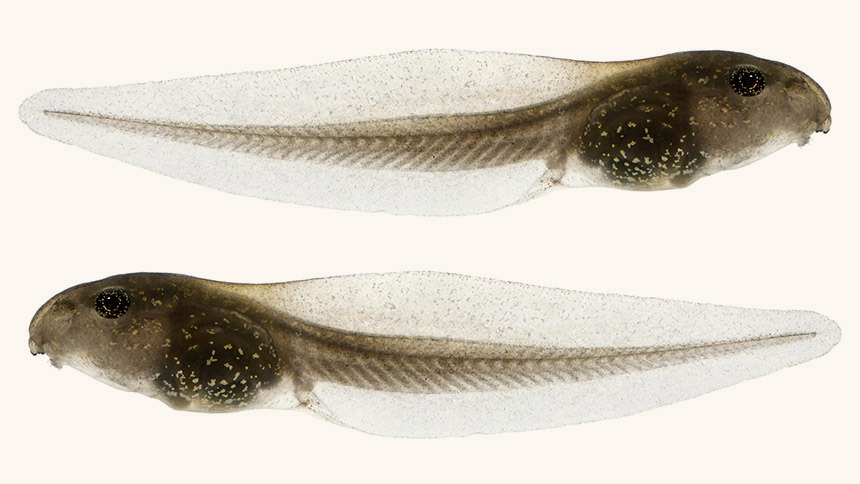
10 Interesting Facts About Tadpoles
If you’ve spent any time near a body of water during the spring and summer months, chances are, you’ve seen little tadpoles swimming around. They can be found in rivers, ponds, creeks, and even puddles; you can find them in nearly any body of water during certain times of the year.
These interesting little creatures are on their way to adulthood. The tadpoles themselves, if you’ve seen them swimming, have successfully hatched from eggs and they’re currently in transition to becoming little froglets and eventually juvenile and full-grown, adult frogs (or toads).
There are many fascinating things about tadpoles and that’s the reason for this page! I’ve listed 10 of the most interesting facts below! I hope you enjoy it.
Page Contents
1. Bullfrog Tadpoles Can Grow as Long as a Banana
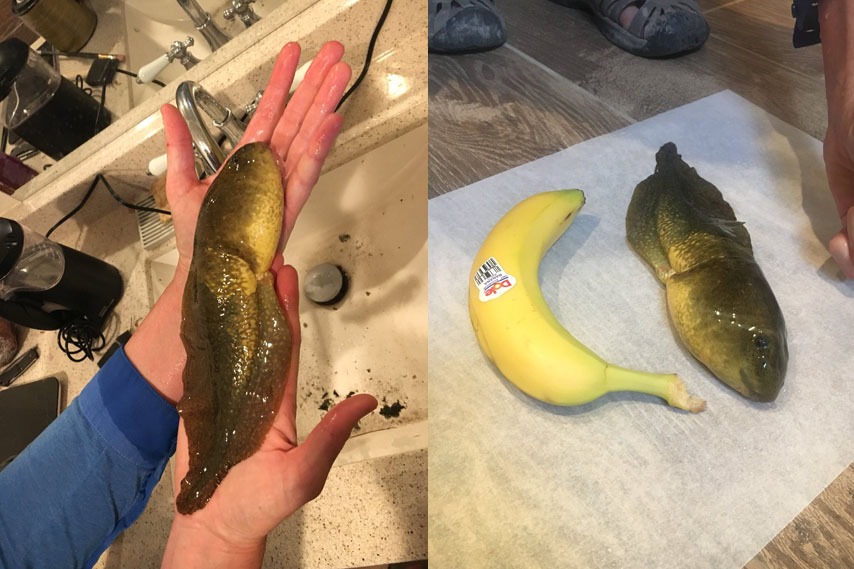
It sounds false but I assure you, it’s true. Bullfrogs are some the world’s largest frogs so it’s no surprise that their tadpoles would be big too. While it’s not common for a bullfrog’s tadpole to grow bigger than a banana, it does happen!
In fact, researchers at Southwestern Research Station discovered a giant tadpole during their initiative to remove invasive bullfrogs from certain ponds. As you can see from the picture above, that’s a giant tadpole!
2. Tadpoles? Toadpoles? Polliwogs?
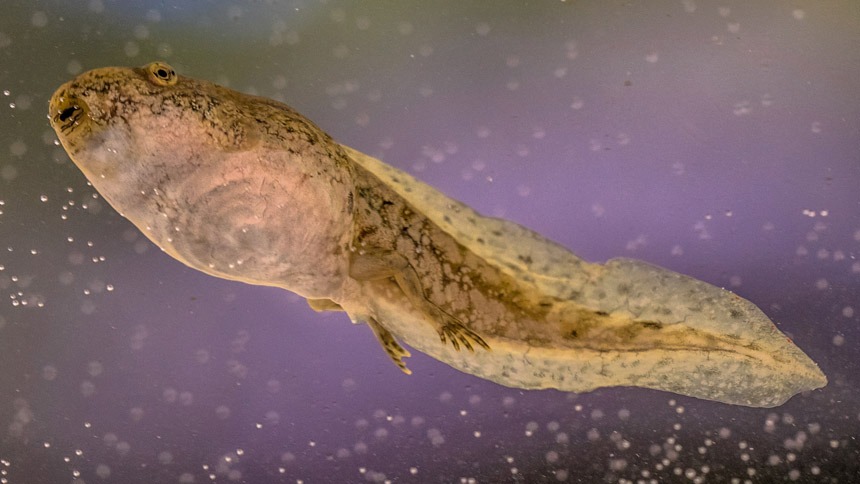
Tadpoles have a few different names; these names are used to describe either frogs or toads but sometimes they’re used interchangeably. A tadpole is the offspring of frogs while a
True toads (Bufonidae family) are different from frogs even though they’re both members of the Anura order. So, a tadpole is from a frog and a
So, what exactly is a polliwog? It’s just another name for a tadpole! The meaning is derived from
3. Tadpoles Hatch from Eggs
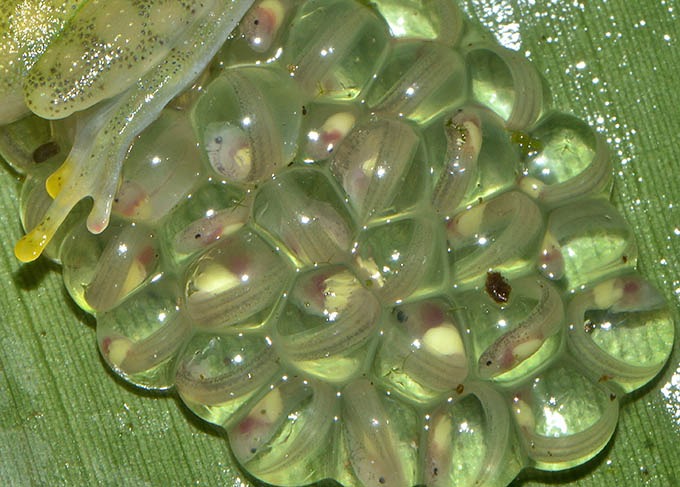
When you see tadpoles swimming around in the water, it’s important to know that they didn’t start their life like that. During the mating process, female frogs typically lay their eggs while the male frog fertilizes the eggs outside of their bodies.
Those little eggs are either clumped together or attached to one another in a long string (depending on the species that laid them). The eggs are jelly-like substance that provides nutrients for the tadpoles. Once the little tadpole inside the egg is big enough, the eggs hatch, and the tadpoles are free.
Some tadpoles remain motionless for several days following their hatching. Don’t worry if you happen to see one lying motionless in a pool of water. Chances are, it just hatched. It should be swimming around within a few days.
4. Poison-dart Tadpoles Ride on Their Mother’s Back
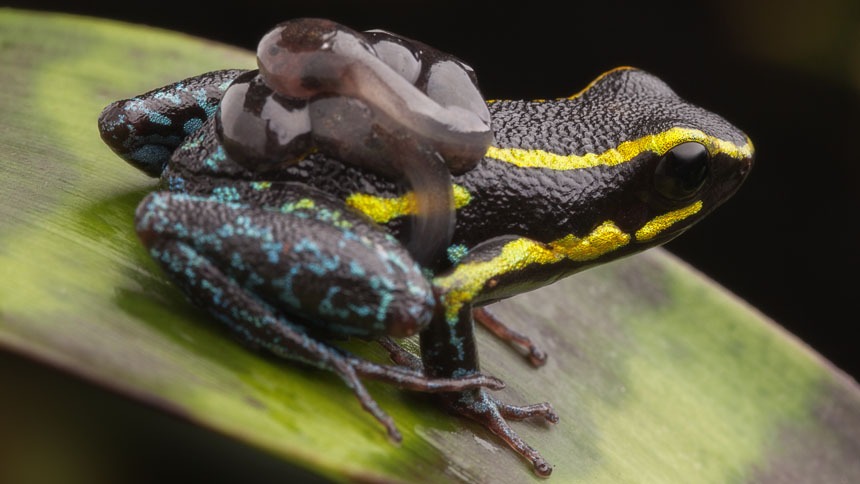
This fact is about a certain type of species; the poison-dart frog. As the heading implies, their tadpoles actually ride on their mother’s back (for a short period of time).
The life cycle of a poison-dart frog is quite unique. Once mating is complete, the eggs are laid on the jungle floor substrate. The father guards his young until they hatch into little tadpoles. At this point, the mother returns to care for her young. This is the part where they ride on their mother’s back.
The little poison-dart tadpoles wiggle their way onto their mother’s back. Once ready, their mother carries them into the tops of the jungle in search of a bromeliad plant. Due to the shape of the bromeliad plant, it can hold several individual pools of water; these little pools of water are where the mother frog places her tadpoles.
5. They Use Gills to Breathe
Tadpoles use internal or external gills to breathe during this stage. As metamorphosing occurs, the gills are swapped out for lungs as the tadpoles transition into young frogs.
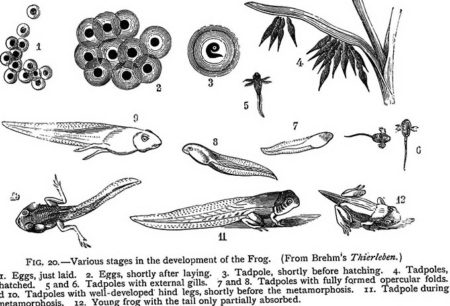
Despite having lugs as adults, frogs have another trick that helps them to stay underwater for long periods of time. Their skin is semi-permeable; it allows the frog to absorb oxygen from the water. This helps them to stay underwater for long periods of time.
Does this sound Interesting? Learn more about the Life Cycle of a Frog.
6. Frogs Lay Thousands of Eggs at a Time
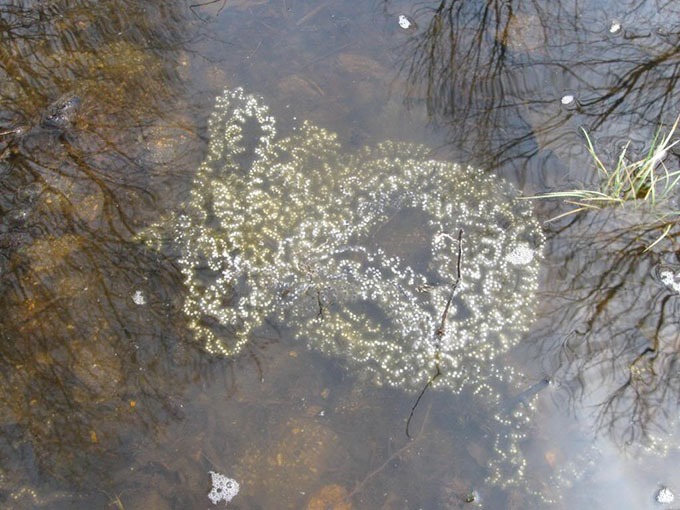
As we’ve learned already, tadpoles hatch from little jelly-covered eggs but did you know that some frogs are capable of laying thousands of eggs at a time? It’s true. The common toad, for example, is known to lay between 3,000 – 6,000 eggs per clutch (a group of eggs).
Why so many eggs? Well, unlike mammals, amphibians rarely stick around to protect their offspring. Laying so many eggs increases the chances that some of their offspring will make it into adulthood.
Many of the eggs will be eaten by fish. As they hatch into little tadpoles, some of them will suffer the same fate. Eventually, many of them will transition into little froglets and grow old enough to reproduce.
7. Tadpoles Eat Plants & Algae
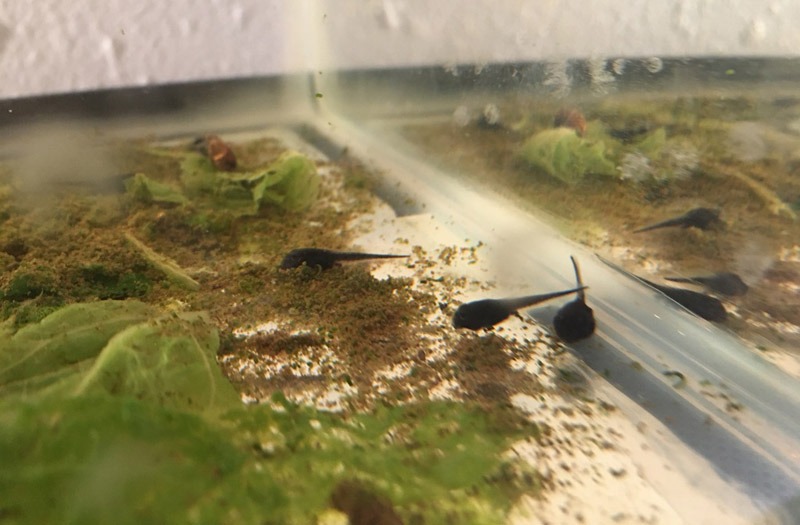
This fact isn’t as interesting as the others but it’s important to cover the basics. Tadpoles eat a variety of foods including plants, larvae, and algae. When presented with the opportunity, tadpoles eat flesh from decaying animals, insects, etc. Regardless, their diet largely consists of plant matter.
Tadpoles are quite different from adult frogs in terms of what they eat. Adult frogs eat insects like spiders, crickets, true bugs, beetles, wasps, and flies.
In captivity, young tadpoles can be fed lettuce, fruits, vegetables, or specialized tadpole foods.
Plan to raise tadpoles of your own? Check out our safe water guide for tadpoles!
8. Darwin’s Frog Tadpoles – A Mouth Full
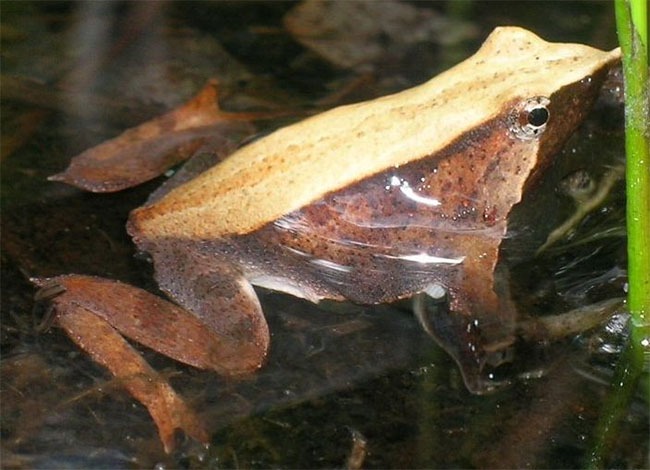
I explained the unique behavior of a poison-dart frog in fact #4 – this one is just as interesting. You see, while most frogs and toads won’t stick around to care for their offspring, some of them do.
It’s not just the poison-dart frogs that protect their young. Glass frogs, Suriname toads (more about them below), and Darwin’s Frog (Rhinoderma
How Darwin’s Frogs protect their tadpoles is much different than other frogs, though. Strangely enough, male Darwin’s frogs actually swallow their own young and store them in their vocal sacs! They’re ingested as eggs, hatch into tadpoles, and morph into little froglets before their dad spits them out into the world.
9. Suriname Toadpoles – A Strange Hiding Place
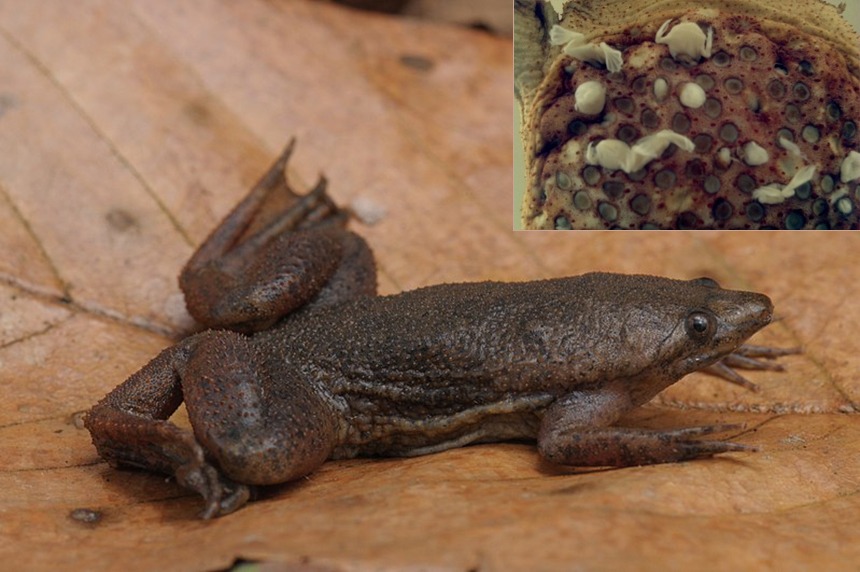
Here is another fact that only pertains to a certain type of tadpole. The species is the Pipa pipa, also known as the Suriname toad. Now, these toads are quite unique in appearance but their behavior with their young that really sets them apart.
First things first, let’s address their strange appearance. Suriname toads are mostly flat and they spend most of their time in the water. Due to their coloration and flat-shaped appearance, they look like fallen leaves. This camouflage makes it difficult to see them in a stream or pool of water.
If their appearance wasn’t fascinating enough, the means by which they protect their tadpoles are even more so. It’s actually kind of creepy.
You see, during the mating process, a female Suriname toad releases eggs through her cloaca and the male toad fertilized them and embeds the eggs into the mother’s back! The eggs stay there until they’re little toads, at which point they emerge from their mother’s back and begin life on their own.
10. Poisonous Tadpoles?!
It stands to reason that poison-dart frogs would produce offspring that are poisonous too, right? Well, it’s true. Although the reason why is an interesting fact worth knowing. The reason this is interesting is
Poison-dart frogs (aka poison arrow frogs) sequester an alkaloid-based chemical from various insects in the wild. If you take away the specific types of foods they get their poison from, the poison-dart frog is no longer poisonous.
In fact, they’re some of the most popular amphibian pets because of that reason. T
Now that you know why poison-dart frogs are poisonous, let’s get back to the subject of their tadpoles. Since their tadpoles aren’t large enough to eat those special toxin-producing insects, it stands to reason that their tadpoles wouldn’t be poisonous.
This is where it gets interesting. First of all, yes, poison-dart tadpoles are poisonous! But it’s not because they were able to eat toxic arthropods.
The tadpoles are poisonous because their mother is able to pass along the toxin through the unfertilized eggs she feeds to the tadpoles! For more reading, find out how to identify poison dart frogs.
11. Tadpoles Eat Non-Stop Until Metamorphosis Begins

The primary goal of a tadpole is to reach the point at which metamorphosis begins. Reaching this point as fast as possible is the best way to ensure their survival.
So, what is the best way to do this? Eat non-stop, of course! Tadpoles eat non-stop until they have enough energy stored for metamorphosis[1].
Prior to metamorphosis, tadpoles have almost zero homeostatic feedback control. In layman’s terms: Tadpoles don’t know when to stop eating. Somewhere between tadpoles and froglets, young frogs gain the ability to control their eating habits.
12. Tadpoles Eat Other Tadpoles Sometimes
Tadpoles eat other tadpoles in extreme situations. In these situations, it’s the larger tadpoles that begin nibbling on the smaller ones.
A situation like this can occur when food sources are limited. For example, hundreds of tadpoles in a shrinking puddle of water. In order to survive, tadpoles may begin eating one another.
References
- Bender, Melissa Cui, et al. “To Eat or Not to Eat: Ontogeny of Hypothalamic Feeding Controls and a Role for Leptin in Modulating Life-History Transition in Amphibian Tadpoles.” Proceedings of the Royal Society B: Biological Sciences, vol. 285, no. 1875, 2018, p. 20172784. Crossref, https://doi.org/10.1098/rspb.2017.2784.[↩]

4 Comments
These facts were very helpful
these facts were very cool and entertaining to read
your smart
nice